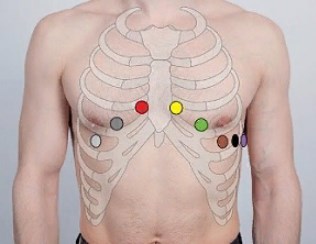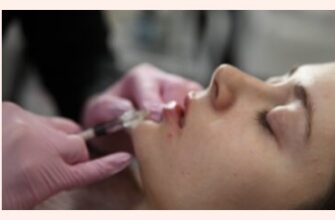electrocardiography (ECG) – it is non-invasive and painless method of examination, carried out to assess the work of the heart and identify its possible violations. In the study of the ECG electrodes, located on the patient's chest and extremities, collected from the body surface information about the electrical functioning of the heart. Data, obtained from two electrodes, between which a voltage difference, recorded on ECG paper tape. The test result is interpreted by an experienced doctor, which of the ECG can read a lot of important information about the patient's heart.

Indications for ECG
Doctor naznachyaet ECG in the following cases:
- Patients with previously diagnosed cardiovascular disease. The group of diseases mentioned above include, in particular, arteriosclerosis, coronary heart disease, heart rhythm disturbances, heart defects, myocarditis or card. In this situation, control test aimed at checking the current status of the patient's disease, evaluation of efficacy or side effects, applied treatment, as well as the identification of possible new diseases. Besides, on the basis of ECG the doctor can assess the risk of surgical treatment of the patient. The doctor conducts an analysis based on a comparison of new results with the previous, so it is important, that the patient brought to accept all of the electrocardiogram.
- Persons with suspected disease of the cardiovascular system. The situation is dangerous for the life of the patient is a myocardial infarction, that is found, in particular, based ECG study. The study can be performed also in a healthy person with an increased risk of heart disease due to other concomitant diseases, which can damage the heart. patients, who in the family has relatives with diseases of the cardiovascular system, the risk of developing heart disease is increased and they should be periodically checked. If the patient develops pain, a burning sensation in the chest, dyspnea, anxiety, pale skin, combined with sweating and loosening – it can be a symptom of myocardial infarction. In this case, when calling an ambulance, an ECG study is carried out at the patient’s home or during transportation using mobile electrocardiographs, which can be purchased on the Heaco website https://heaco.ua/catalog/electrocardiograph/.
- Healthy people without symptoms of developing heart disease. The main objective of the study is to identify the possible asymptomatic changes in the cardiovascular system. The study is particularly true:
- Persons who take medicines that can adversely affect the cardiovascular system;
- people after 40. years as part of periodic checks;
- athletes before heavy physical activity.
How does an ECG study work??
Doctor, which conducts research, Ask the patient about the absence of metal products, such as jewelry, they can disrupt research. Then you need to remove all clothing from the waist up (Women also need to remove her bra) bare feet and ankles and wrists. Nurse or doctor, conducting research, usually, asked to remove all jewelry on the wrists. The study does not last long, about 5 minutes in total.
Location electrodes
Research is conducted in a patient, which lies flat on his back, with hands, located along the body. Then the nurse sets 6 electrodes on the chest and strengthens 4 clip electrodes to the wrists and ankles, feet (the location of the ECG electrodes shown in the picture beginning of the article).
Before installing each electrode nurse moistened cotton swab, moistened with a solution of alcohol place bonding electrodes, to improve conductivity. Each electrode has a strictly prescribed place, which is to be placed. Clips are installed at the wrists, red on the right, and the yellow on the left, legs at the ankles – on the right-Black, on the left-green.
Then, a study using an ECG. During the analysis, the current from the electrodes passes through the patient's body. It is important during the study did not speak or move, so as not to distort the result. Research is absolutely painless and non-invasive, and the patient does not experience discomfort, caused by the passage of current through the body. After completion of the study's face, which conducts research, checks or electrocardiogram was preserved without interference, and then removes from the patient electrodes. A study completed, and the patient can wear. The nurse will inform the patient, when and where he will be able to pick up the results.
Electrocardiogram doctor transferred, which makes interpretation of the study, and decide on further action. The result of the study is recorded on ECG graph paper, so you can calculate your heart rate and duration of the individual cardiac cycles.
How to prepare for electrocardiography?
To conduct the study ECG is no need for special training of the patient. If you are taking medication, before the study should inform your doctor. If the patient has a lush chest hair – you need to shave before the test, because the hair difficult current conductivity.
Before performing electrocardiographic studies need to rest for at least 5 minutes, because rapid heartbeat can affect the outcome. There are no restrictions to the use of food and beverages, but a short time before the test should not take cold drinks, as they can affect the outcome.
what are the contraindications?
Electrocardiography is a non-invasive and safe method of investigation and has no contraindications. Even patients with an implanted pacemaker, you can do an electrocardiogram.
What complications can occur after the ECG?
Electrocardiography is a safety study and does not cause complications.












